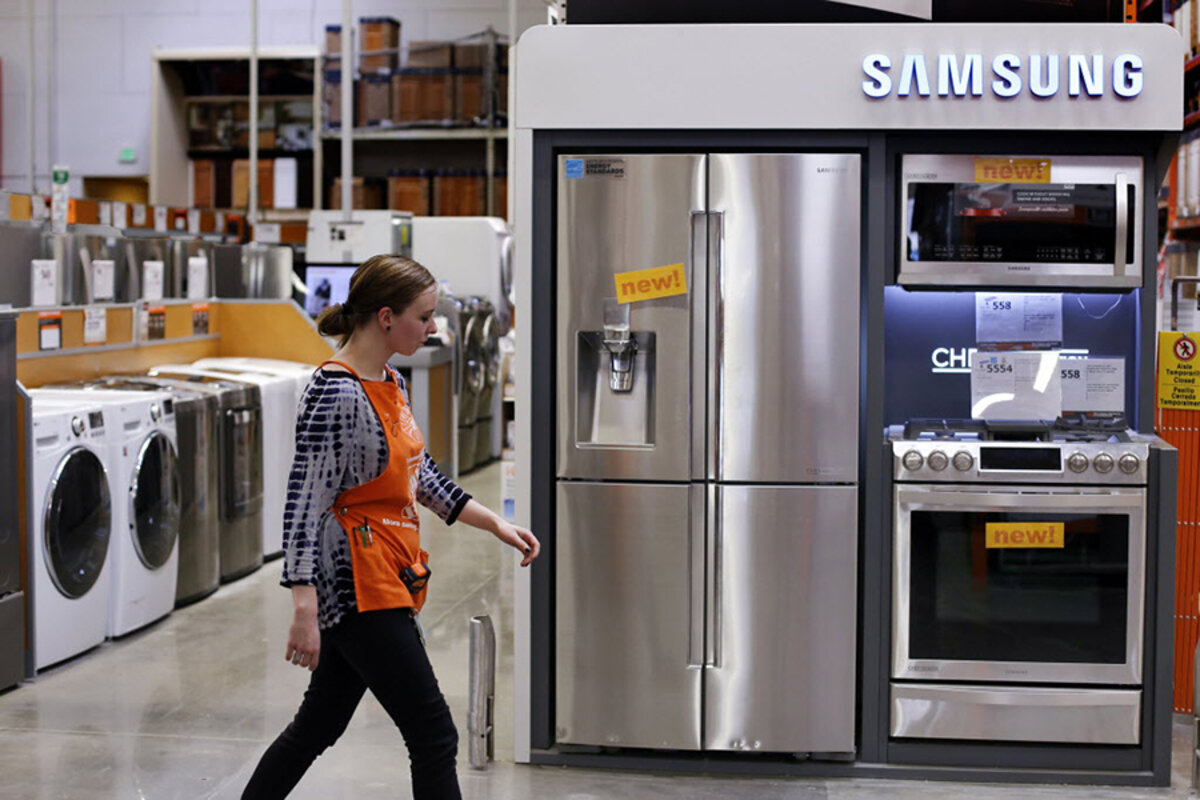Why Americans spend more on their homes than their clothes
Loading...
At stores across the country, Americans are spending more on home improvement than clothes, a shift that may be driven by a housing market that is recovering and Millennial consumers who are entering their peak years of spending.
Home Depot reported a strong start to 2016, with , including on big-ticket purchases.
The home improvement chain said Tuesday that its sales at existing stores of the year. At the same time, sales from major department story clothing retailers, including Kohl’s, J.C. Penney, and Macy’s have been declining, the stores reported last week.
Millennials haven't stopped buying clothes. They're buying them online. The shift in what – and where – consumers are buying is also influenced by the rise of online retailers such as Amazon. Department stores in aggregate lost an estimated $348 million dollars in apparel revenue in the first quarter, while Amazon likely grew its apparel sales by $1.4 billion in the period, .
While the online retail giant has risen to become the second-largest clothing retailer in the US, , home-improvement sales remain a more hands-on, off-line business, analysts say.
“I don’t think you’re going to see a lot of competition from Amazon for home improvement type products,” says Paul Ellickson, a professor of marketing and economics at the University of Rochester’s Simon School of Business.
“They’re heavy and they’re hard to ship, and you want the option to be able to take them back. That’s a class of products, kind of like food that’s perishable, that the online retailers struggle to make inroads to, whereas clothing and books and music are things that people are comfortable buying online,” he adds.
At Home Depot, consumers spent an average of $60 per trip, a slight increase over the same period last year, while spending on items that cost over $900 rose 9.5 percent, said Ted Decker, the company's head of merchandising, with analysts.
The home improvement chains have also benefited from a housing market that is beginning to recover. Among major cities, home values are up the most in a broad band from Texas up to the Northwest, The Washington Post reports in an .
Nearly a decade removed from the 2008 recession, many companies are focusing more intensely on the growing generation of younger consumers beginning to considering buying a home, says Paula Rosenblum, managing partner at RSR Research, which focuses on the retail industry.
“If you watch TV, you can see that a lot of the ads around mortgages are really focused on Millennials, who are overall hesitant to get into debt because they grew up through the Great Recession, but nonetheless they have to be practical,” she says. “If you’re starting a family at some point, you just need to buy a house, and if you buy a house, you need to put money into it, and so I think that’s a big contributor [to home improvement sales]. I think everyone underestimates the dramatic change that Millennials coming into their peak discretionary spending years have had on everything.”
Executives from Home Depot echoed those sentiments during the call on Tuesday.
“What our research tells us is that basically this is a delayed cycle, that the Millennial generation has many of the same desires that generations prior to them have,” said chief executive Craig Menear. Carol Tomé, the company’s chief financial officer, noted that the average age of homebuyers was 33, .
Clothing sales, by contrast, are slowing down across the country, Ms. Rosenblum says, though those numbers may be more in terms of dollar sales than the number of units sold by retailers.
In addition to online sales, the slide in department store clothing sales is also affected by the rise of affordable, “fast fashion” retailers such as H&M, though that company also during its first quarter.
But while online stores gain more sales, that also means an increase in returns, because consumers can afford to take a low-risk gamble on whether they’ll decide to keep a particular item, she notes.
Home Depot said this year’s warmer-than-usual winter , with appliances, roofing materials, and windows as particularly popular items.
It also remains a key destination for contractors, a market where Amazon has yet to make inroads, Rosenblum says.
Unlike clothing, home improvement stores are also in an unusual position to reap the benefits of a growing housing market, says Professor Ellickson. Rival Lowe’s is set to release its own earnings on Wednesday.
With online retailers unlikely to capture much of a market dominated by physical stores, technological changes don’t play as much of a role with home improvement sales as in other industries.
“I suspect that it will continue for a while, I think that what you will be more likely to see is people who are offering a sort of hybrid, sort of like what Walmart does,” Ellickson says. “I think that sort of hybrid model of having the physical outlets and then being able to return [online items], you’ll see a mix of those things.”




